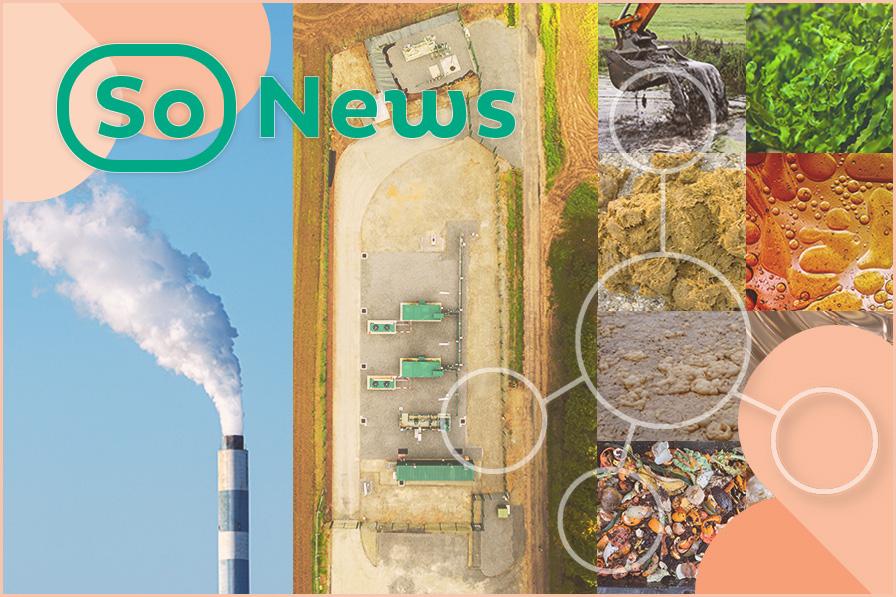soNews - July 2024

soNews is a blogletter sent to our partners and contacts (local authorities, energy providers, customers, suppliers, etc.). It shines the spotlight on the projects carried out or supported by GRTgaz in the field of energy transition and the 3rd Gas Revolution.
Contents of soNews
“A fabulous European adventure “. It was in those words that Sandrine Meunier, GRTgaz's Managing Director, summed up the partnership we signed, with Norwegian energy company Equinor on 17 June. The two companies have agreed to work together to develop an unprecedented CO2 transport and storage chain between the Dunkirk industrial basin, the largest emitter of greenhouse gases in France, and storage sites in the North Sea. Between now and 2029, GRTgaz will be building 30 km of onshore pipeline network in the industrial port zone, with a view to transporting 3 to 5 million tonnes of CO2 a year from industrial processes. The carbon dioxide will then be compressed and transported to safe, permanent geological storage beneath the seabed off the coast of Norway. Equinor will deploy the large-capacity offshore pipeline. Commissioning expected in 2029. This signature sends a strong signal to industry. "The capture, recovery or storage of CO2 will play a major role in decarbonising the national and European economy, and infrastructure is an essential element in this CO2 value chain," emphasised Sandrine Meunier. The project is scalable: in the future, industrial sites located further away from Dunkirk will be able to connect to the network.
The European dynamic is also shifting to hydrogen. The transmission operators GRTgaz, Creos Luxembourg and Fluxys Hydrogen in Belgium have announced the launch of a vast hydrogen transmission network project called HY4Link. In the Greater Region, at the heart of the future European Hydrogen Dorsal, it will link French, German and Luxembourg industries to hydrogen import hubs in Antwerp, Zeebrugge, Rotterdam and Dunkirk. Between the Grand Est region and Luxembourg, GRTgaz and Creos Luxembourg will also review the possibility of developing a network connected to the other major regional project, mosaHYc. In the longer term, a second phase will link HY4Link to the HY-FEN national hydrogen pipeline and to a regional hydrogen storage project.
Hydrothermal gasification has everything it takes to become a major renewable, low-carbon gas production option in France. This innovative technology makes it possible to produce renewable gas from waste that has little value, either containing or easily mixed with water. According to the National Hydrothermal Gasification Working Group, GH could produce 50 TWh/year of gas that could be fed into the grid by 2050! It also recovers minerals and metals, or nitrogenous water, contained in the waste. To get it off the ground, GRTgaz is organising a Call for Expressions of Interest (AMI) open to project developers, from 2 September to 31 October 2024. Eagerly awaited, this AMI is an essential step before the first industrial production facilities emerge by 2027. GRTgaz is there to support interested manufacturers, farmers and local authorities.
On 25 June, GRTgaz and the transmission system operators Enagás (Spain) and Teréga (south-west France), in cooperation with the German transmission operator OGE, signed the joint cooperation agreement for the development phase of the BarMar project in Madrid. Short for Barcelona-Marseille, BarMar will link Spain and France via a maritime hydrogen pipeline. It will form the key section of the future European hydrogen transport network linking the Iberian Peninsula, France, Germany and Northern Europe. The agreement will pave the way for feasibility studies.
- 18% :
The proportion of the investment devoted by GRTgaz to renewable gas, hydrogen and the carbon trajectory over the course of 2023. Read our 2023 integrated report. - 5,000 billion:
According to Geoffrey Ellis, a geologist at the US Geological Survey, that's the amount of hydrogen in the earth's subsurface.
We know that electrification and hydrogen will not be enough to rapidly decarbonise heavy road transport (lorries, buses, coaches, etc.). And yet the situation is urgent. BioNGV, which is growing rapidly in France, will continue to play a key role in the energy mix for heavy-duty mobility. It is low-carbon, accessible, efficient and affordable. Jean Terrier, National Gas Mobility Manager at GRTgaz, says it best.
This year, this major event celebrates its 25th anniversary in Dunkirk, from 10 to 12 September. Over 3,500 delegates are expected to attend. GRTgaz will be talking about CO2 transport, low-carbon industrial boilers and hydrothermal gasification. Shall we meet up there?
Subscribe to the soTerritoires and soNews newsletters
